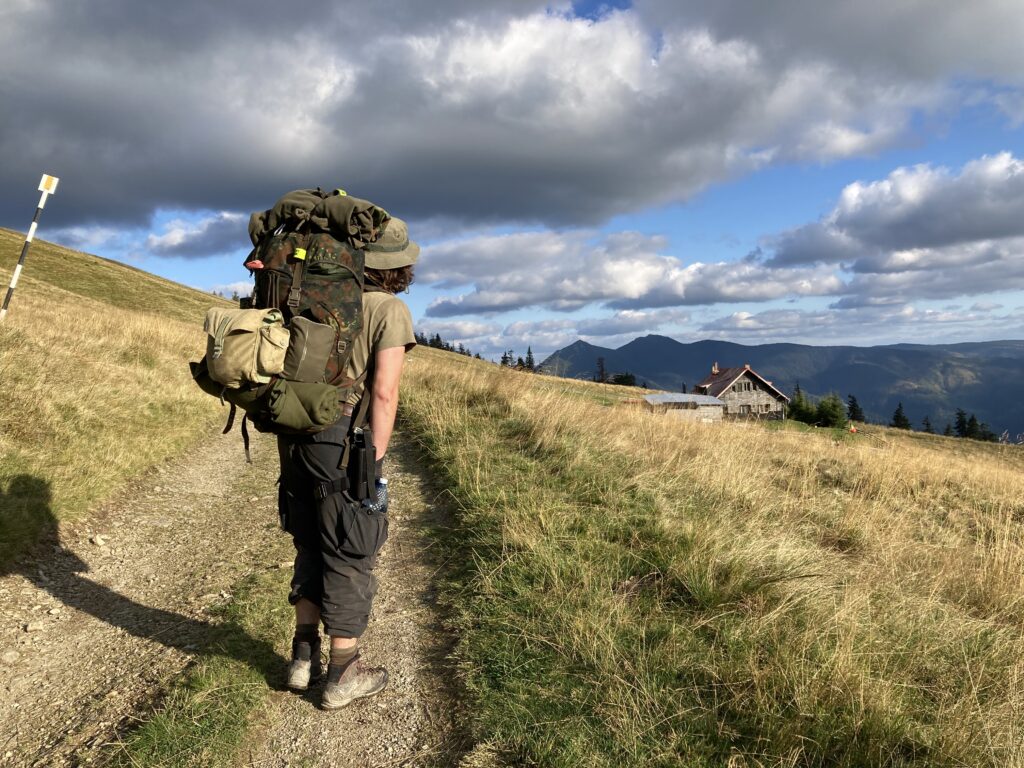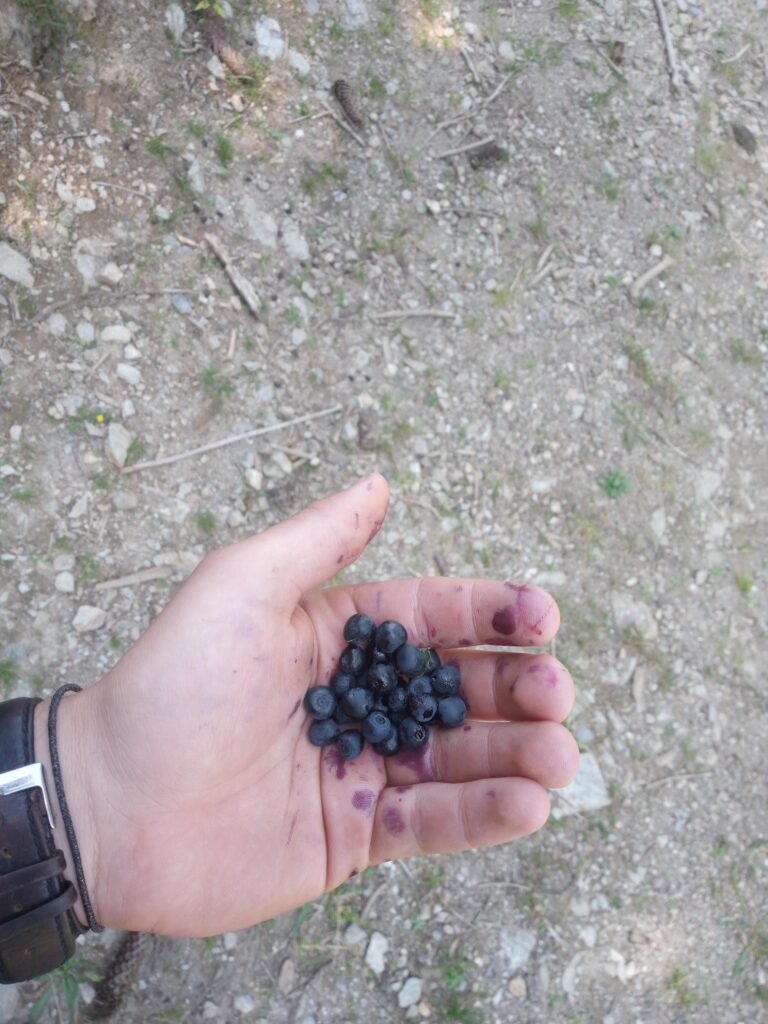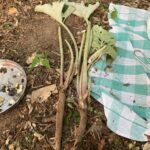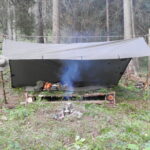Everybody knows military food rations and MREs — long-lasting, durable food in plastic bags, always featuring a flameless chemical heater or a small Esbit-type stove. For some outdoor activity enthusiasts, it’s a go-to provisions option when on the hike. Other people love lyophilizates, ultralight dried meals, usually a lot tastier than MREs (but generally more expensive). What if I told you that none of those options are as good as advertised?
What is a daily food ration and what is its purpose?
The daily ration is a portion of food, of which nutritious value should allow you to spend the day without starving. It won’t be an amount of food that’ll allow you to feel full throughout the day, but simply the basic amount that’ll keep you going in good health. Rationing food is especially important on longer hikes with no access to civilisation — if you eat too much one day, you can find yourself starving in the last days of your hike. You have to divide all your food into portions, assigning one to each day of your trip.
When hiking you don’t want to spend lots of time cooking food, you also don’t want to carry a lot. That’s why dry and easy-to-cook ingredients are the best option. Also, if possible, those ingredients should be edible even without heat treatment — who knows, maybe you won’t be able to heat the ration one day.
Problems with military rations
MREs are quite cheap and there’s no philosophy in preparing them. Every country’s military has several own menus and if you buy rations from different countries you can get quite a variety of meals. MREs can last for years and even after an expiration date they still hold up quite well. So, what’s the problem?
They were not designed to be carried in a rucksack but on a vehicle of some sort. Military rations are bulky and will take up a lot of space in your backpack. Additionally, they have a very poor nutritional value — they mostly contain carbs (including lots of sugar) and some fat, hardly any protein and vitamins. That also means they don’t provide a lot of calories, so you need at least two MREs to get you through the day. The next downside is the amount of plastic waste left after consuming one, cause everything is packed in individual single-use bags. Leaving this trash somewhere on the trail will be unethical, so you just have to carry it with you to the nearest dumpster — it will take space in your ruck and add some weight.
Problems with lyophilizates
They are lightweight and generally quite tasty. The ingredients are also generally good — as if cooked in an actual kitchen. Many backpackers love them for the speed of preparation. You just have to boil your water (with a good stove it’s only about 3-5 minutes), pour it into the bag, wait for a couple of minutes and the meal is ready. But here the good stuff ends.
Lyophilizates are expensive. Some meals cost the same as if they were on a restaurant menu. If you’re cooking yourself, you probably make a day worth of food for less money than a single lyophilizate meal will cost you. And if you want to cover your nutritional needs for the whole day, you’ll need 2 or 3 bags, cause one bag contains only one meal. Those costs will add up to absurd amounts of money per day. Also, the bags left after the meal are not good for anything but trash. On top of that, most lyophilizate bags take quite a lot of space for what they are, so if you’re planning a long expedition they’ll probably take a lot of space compared to their caloric value.
What is the solution?
We need foods that are:
- Calorie-dense
- Light
- Durable
- Compact
- Fast to cook
- Tasty
They should provide all the nutritional value needed to stay healthy. If possible, they should vary from day to day so you don’t get bored eating the same stuff every day.
That’s why I make my own food rations, taking control over their ingredients and nutritional properties. All my rations consist of 3 meals:
- Breakfast (consumed in the morning, right after waking up, before setting out on the hike)
- Snack (something to bite on during the hike)
- Dinner (consumed in the evening, after the hike, and when the camp is already set up)
This system will provide you with energy to walk and enable you to regenerate after the hike.
The best choice for breakfast is food rich in carbohydrates to ensure you have energy to walk, and proteins that will keep you feeling full for a long time. Don’t be too generous with proteins, cause they are harder to digest —too much can slow you down.
For a snack, take something calorie-dense. Best foods for this purpose have a lot of carbs and fats. Carbs give you an instant energy boost and fats provide a lot of calories (1 g of fat is 9 kcal) to use up during the hike.
For dinner, eat a generous, balanced meal that will contain a solid amount of protein. You’ll need proteins to regenerate your muscles after the long hike.

My ingredient recommendations
Breakfast:
- Instant oats/semolina
- Powdered milk
- Dried fruit
- Nuts
Those ingredients will make a great porridge or a semolina gruel. Just mix all ingredients together and add boiling water, then wait for about 5 minutes, and the meal is ready.
Snack:
- Biscuits/crackers (must be hard and dense)
- Halva
- Dark chocolate (80% cocoa or more)
- Nuts
- Dried fruit
Choose from one to three things from this list. Divide them into portions for each day and try to eat as little during the march as possible — a spare snack can serve as emergency food if something goes wrong.
Dinner:
- Couscous / dried potatoes
- Pemican / dried meat and lard / fried bacon
- Dried vegetables
Mix the ingredients together and add boiling water. Wait for a couple of minutes and then enjoy your meal.
When using bacon you have to prep it properly for your hiking trip. Choose smoked bacon (not just smoke-flavoured), dice it, and render all the fat. Make sure the meat gets browned and crisp — this means most of the water has evaporated from the meat. Store the bacon in its own fat and use it together with the lard it’s embedded in.
If you want to make pemican for your ration, dry some meat, grind it, and mix with lard or suet in 1:1 ratio.
The ingredients listed above are only the ones I actually used on my hikes. I may expand this list in the future after experimenting with more products (e.g. instant polenta, millet flakes, hardtack, ghee butter etc.), but for now, I want only to recommend things that I know for certain are good. I also recommend carrying some honey and salt with you to flavour your dishes. You can also make a makeshift isotonic drink just by adding some salt, honey and foraged herbs or fruit to your drinking water.
The daily food ration example:
Breakfast (circa 455 kcal):
- 80 g instant oats
- 10 g powdered milk
- 10 g raisins
- 10 g cashews
- 10 g honey
Snack (circa 790 kcal):
- 100 g peanuts
- 50 g dried apples
- 40 g dense crackers
Dinner (circa 875 kcal):
- 70 g pemican
- 20 g dried vegetables
- 100 g couscous
- Salt
The whole food in the ration weighs 500 g and provides about 2120 kcal. It’s not a lot, but it’s still better than MREs and, as I said, — it’s not food designed to keep you full all the time, but to keep you going. You’ll lose some weight when living off these rations, but you’ll still have plenty of energy every day to march. Of course, you have to adjust the amount of calories and the ingredients to your own needs — you may be lighter or heavier than I am, taller or shorter, and all of that will affect your recommended daily food consumption. That’s why it’s important to test this type of rations before using them on a longer trip.

I’ll be expanding the topic of food rations in the future for sure. I’m still experimenting with some new ingredients and preparation methods, but I hope my introduction to the basics was useful.


